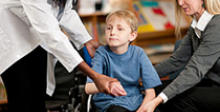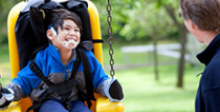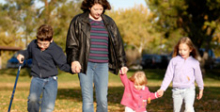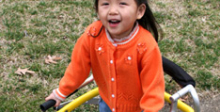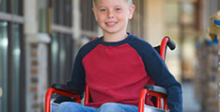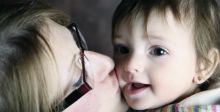Internal mini form
Contact Us Today
Movement sets people into action fueling self-sufficiency while fostering independence. The ability to ambulate is not only useful for physical health, but for mental wellbeing. Motor skills are often impaired to varying degrees in individuals who have Cerebral Palsy. Some individuals need assistive devices – walkers, canes, gait trainers, standers, or orthotics – while others use wheelchairs to get from one point to another.
The benefits of being as independently mobile as possible are far reaching, from muscle strength and dexterity to bone and skin health. In addition, movement stimulates appetite, circulation, and intestinal tracts while preventing stroke-causing clots, urinary incontinence and infections. Physical, occupational and recreational therapy can be utilized to optimize a person’s ability to be as independently mobile as possible.
Children newly diagnosed with Cerebral Palsy, developmental delay or motor dysfunction can greatly benefit by early interventions and therapies. Adults are encouraged to maintain health and fitness to thwart the effects of aging with disability. They are urged to consult occupational and recreational therapists to find solutions to activity limitations.

Associative conditions
Cerebral Palsy affects muscle tone, gross and fine motor functions, balance, coordination, and posture. These conditions are mainly orthopedic in nature and are considered primary conditions of Cerebral Palsy. There are associative conditions, like seizures and intellectual impairment that are common in individuals with Cerebral Palsy. And, there are co-mitigating factors that co-exist with Cerebral Palsy, but are unrelated to it. Understanding conditions commonly associated with Cerebral Palsy will enhance your ability to manage your child’s unique health concerns.
Associative Conditions
Common associative conditions
Click on a condition listed below to learn more.



